1953 Rover P4 75
January 2018 - Initial condition
Return to Home
Return to Resources
Return to Rover P4 page
The Texas title that came with the car had a couple issues. First the title listed the car as a 1954 model, but its serial number is 34330942 corresponding to 1953. Also, Rover changed to a floor shifter starting in 1954 and this P4 had the early style column shifter. The second issue was the VIN used in the title was tied to the engine serial number so with the original engine long gone, the title is completely useless. I will have to go through the process of a Texas 68-A vehicle inspection. This inspection is performed by Texas county law enforcement to get a brand new title issued based on the visual inspection of the current vehicle configuration and engine. Texas 68-A inspections are more common with custom vehicles that usually have a non-original engine and potentially a frame not original to the body of the vehicle.
1950-55 Rover P4 Serial Number decoding
Serial numbers for 1950 to 1955 model years have 8 digits in the format ABCDZZZZ.
- A = Single digit model year starting at 1950 (i.e. 0 = 1950, 5 = 1955)
- B = Model (3 = "model 60", 4 = "model 75", 5 = "model 90")
- C = Assembly (3 = complete or 6/7/8 = model 60/75/90 knocked down for local assembly)
- D = Configuration (0 = RHD domestic, 6 = RHD export, 3 = LHD export)
- ZZZZ = 4-digit production serial number
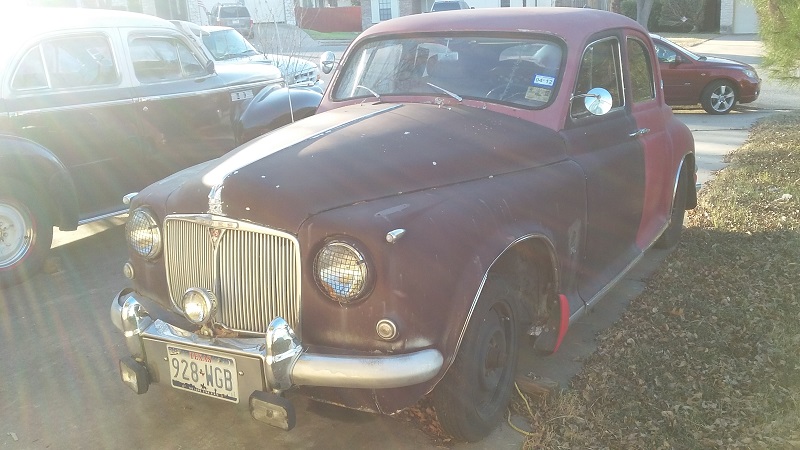
January 5, 2018 - Day One. Serial number 34330942 indicates this is a 1953 LHD export with production number 942 (out of 2036 made according to "The Rover P4 Story" by James Taylor). As I would later uncover during the restoration and further confirm with a factory record certification from the British Motor Museum, this P4 originally left the factory with an Ivory (No. 5) colored exterior paint and Green interior upholstery. It was built on February 24, 1953 and happens to be on my mother's birthday! It was dispatched to Rootes Motors Limited in San Francisco, California on March 3, 1953. In the early 1950s, Rootes handled Rover imports to the USA mainly in 2 locations; San Francisco and New York. Before I had the factory record information from the British Motor Museum, I did not suspect this P4 ever saw New York weather and probably went through San Francisco because of its fairly rust-free condition.

Serial number tag taken from the driver side front door pillar.
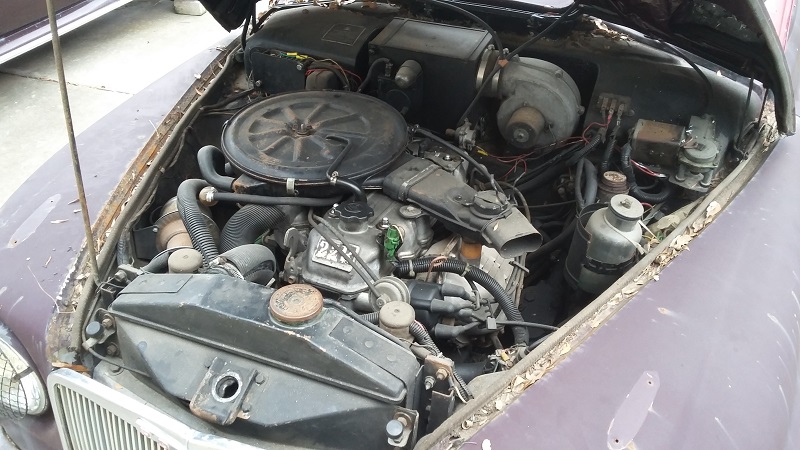
Toyota 22R in engine compartment. The owner claimed it "ran" and the gas tank just needs to be flushed. Last inspection was in 2013 and it presumably has sat for 5 years until the purchase in 2018.
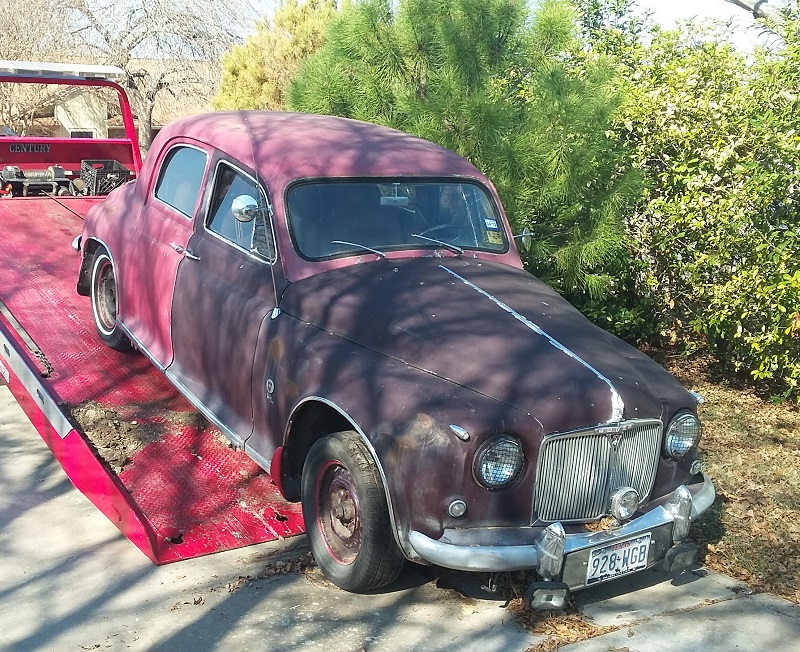
Loading on flatbed truck to be towed to its new home.
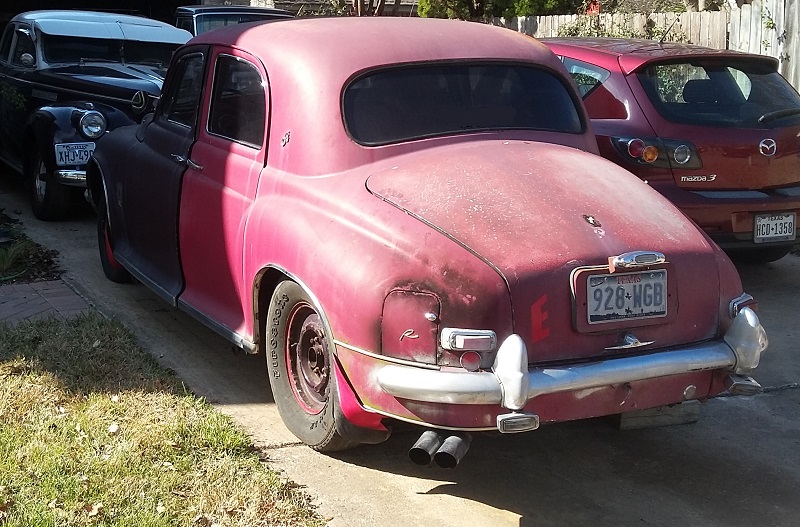
Rear view as found. Notice the bizarre two-tone paint job. No it is not divided from top to bottom, or left to right. It's divided front to back. Who does that?! Front half was painted a dark eggplant purple and the rear half in a dark pink. I have no idea what the previous owner was thinking when this paint scheme was done. Your guess is as good as mine!
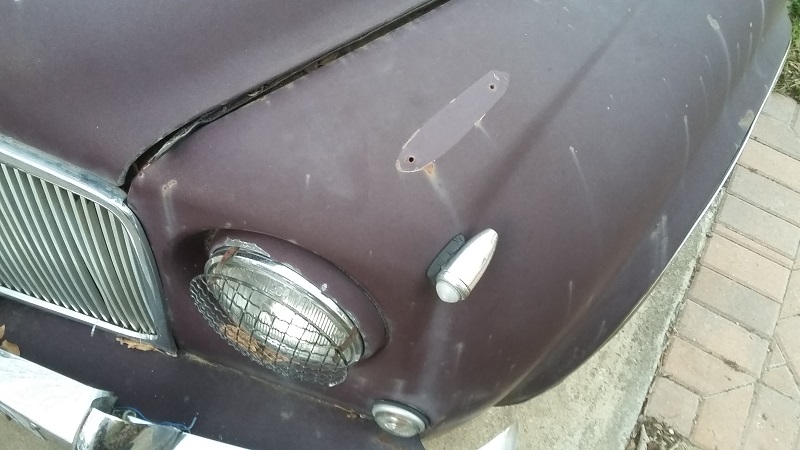
These early Rover P4 cars did not come with side view mirrors standard as far as I can tell. The front fenders or "wings" as the Brits call it have telltale signs of where side view mirrors used to be mounted.
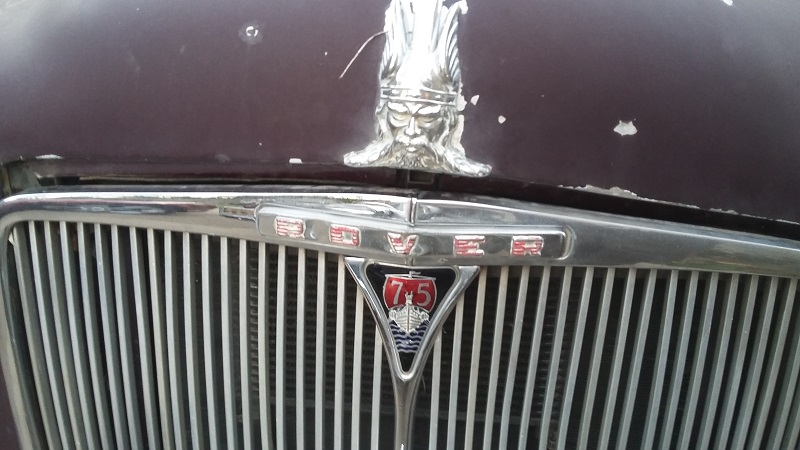
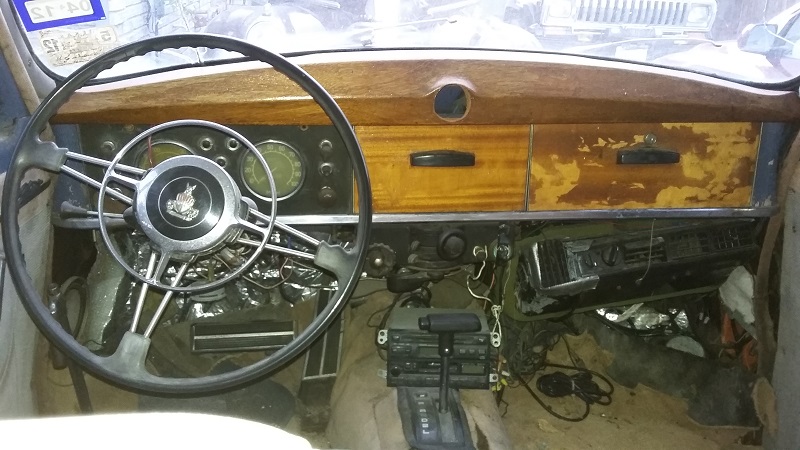
View of the front interior as found. The veneer on the dash especially on the rightmost glovebox door is severely damaged. The original veneered pieces at the ends of the dash were spray painted at one time with a dark blue textured paint.
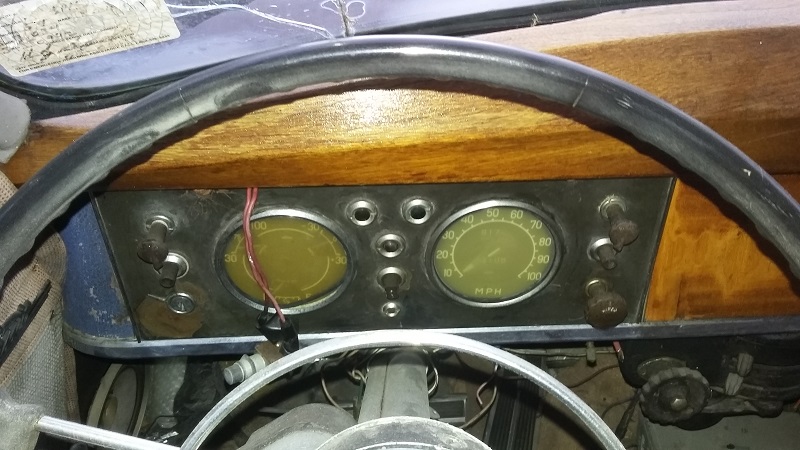
Close up of the dash gauges. There is a plastic layer between the front glass and the gauges that have yellowed due to age, but fortunately reproductions can be found for these.
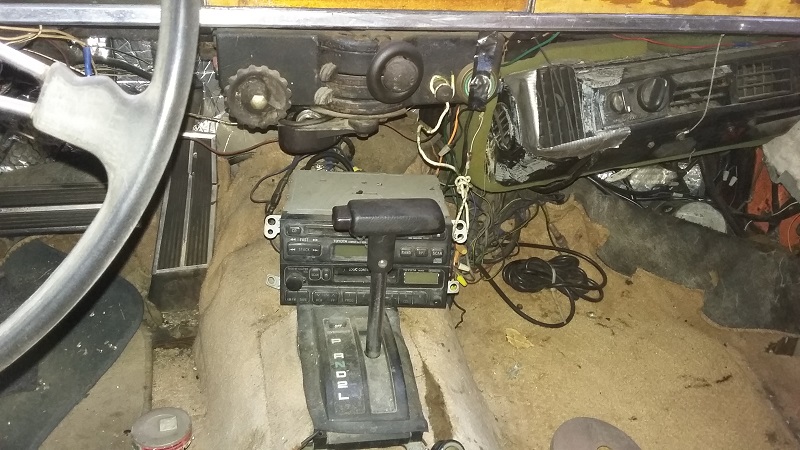
Close up view of the mess in the front interior. The original column gear shift was removed and you can see the Toyota automatic transmission shifter in the center of the floor. In the passenger side is an air conditioning system, which is a must have in Texas but this universal unit was bulky and poorly installed that sitting in the passenger side was probably awkward if not uncomfortable. Yes, that is the radio in the center hanging by a few wires.
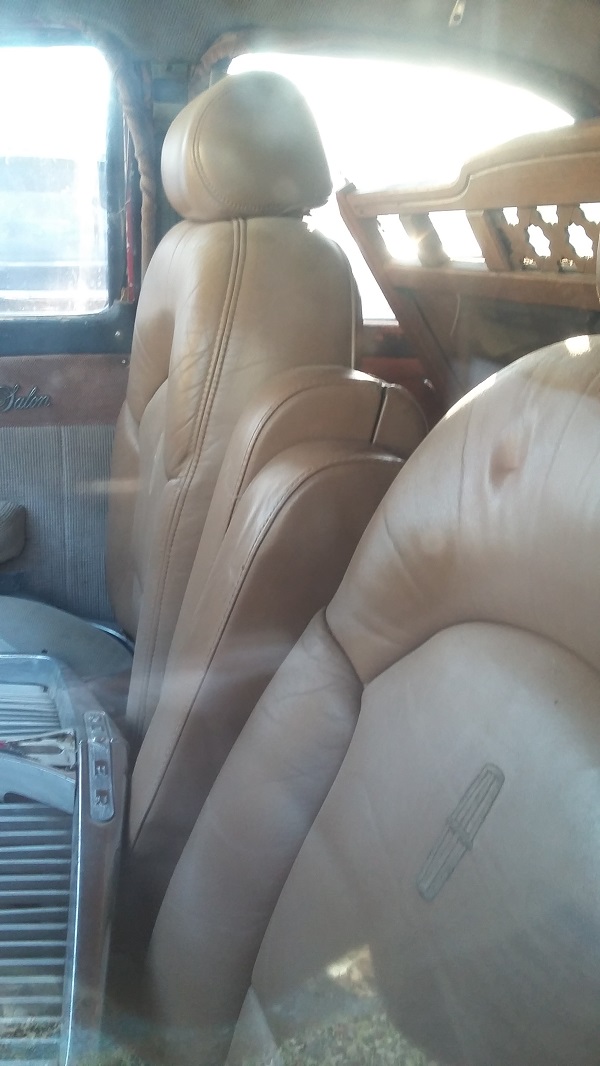
The original interior was long gone and in its place are late 1990s Lincoln Continential leather seats. Whoever did this mounted the seats on the sheet metal floor instead of properly fastening the seats to the original mount holes that were secured to the frame. These seats will be the first things heading to the dumpster.
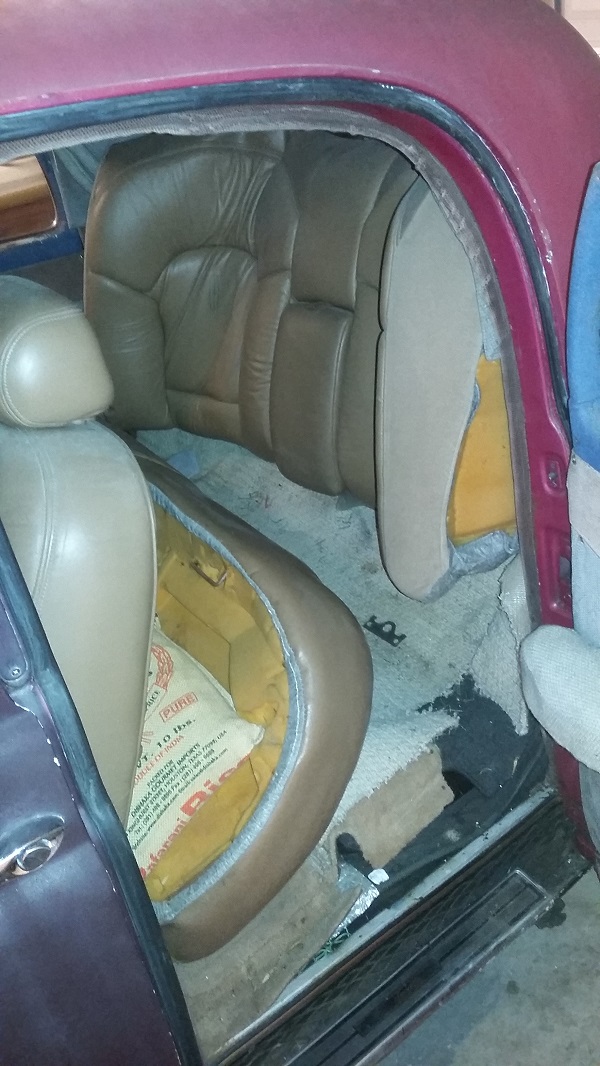
The rear seats also appear to have come from the same Lincoln donor as the front seats, but they are clearly too large so what you see is some attempt by the previous owner to shoehorn the seats in place. This was done so poorly that I doubt anyone ever tried to ride in the back.

Front door panel as found. Armrest and controls are original, but the panel material itself is not original. The wood trim around the windows was spray painted at one time with the same dark blue textured paint used on the dashboard.
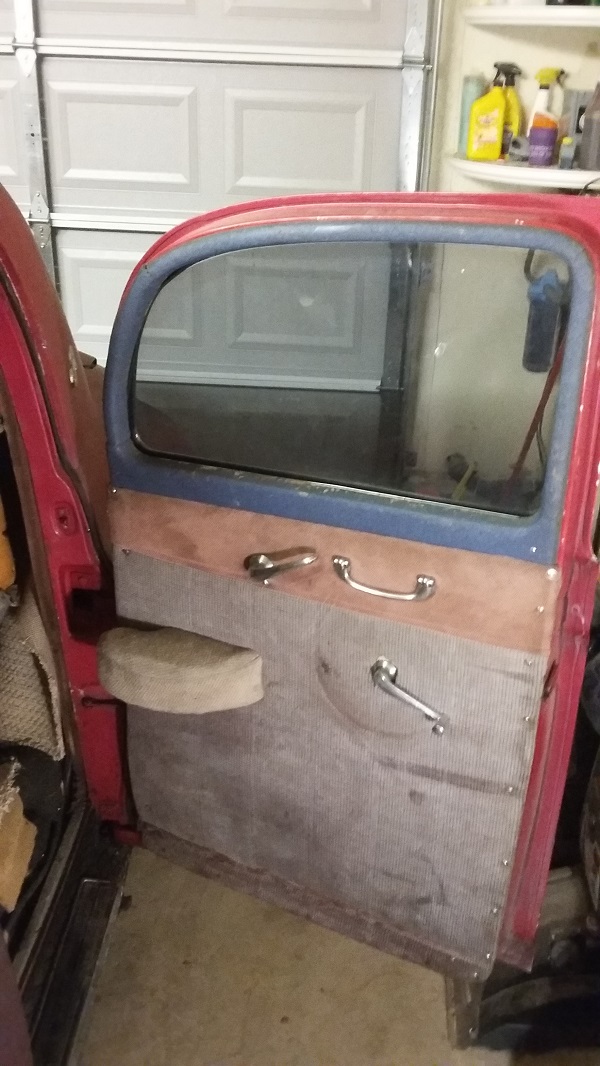
Rear door panel as found and in similar condition as the front panels.